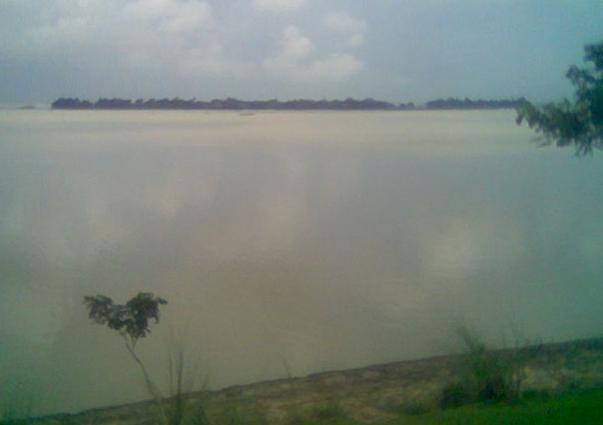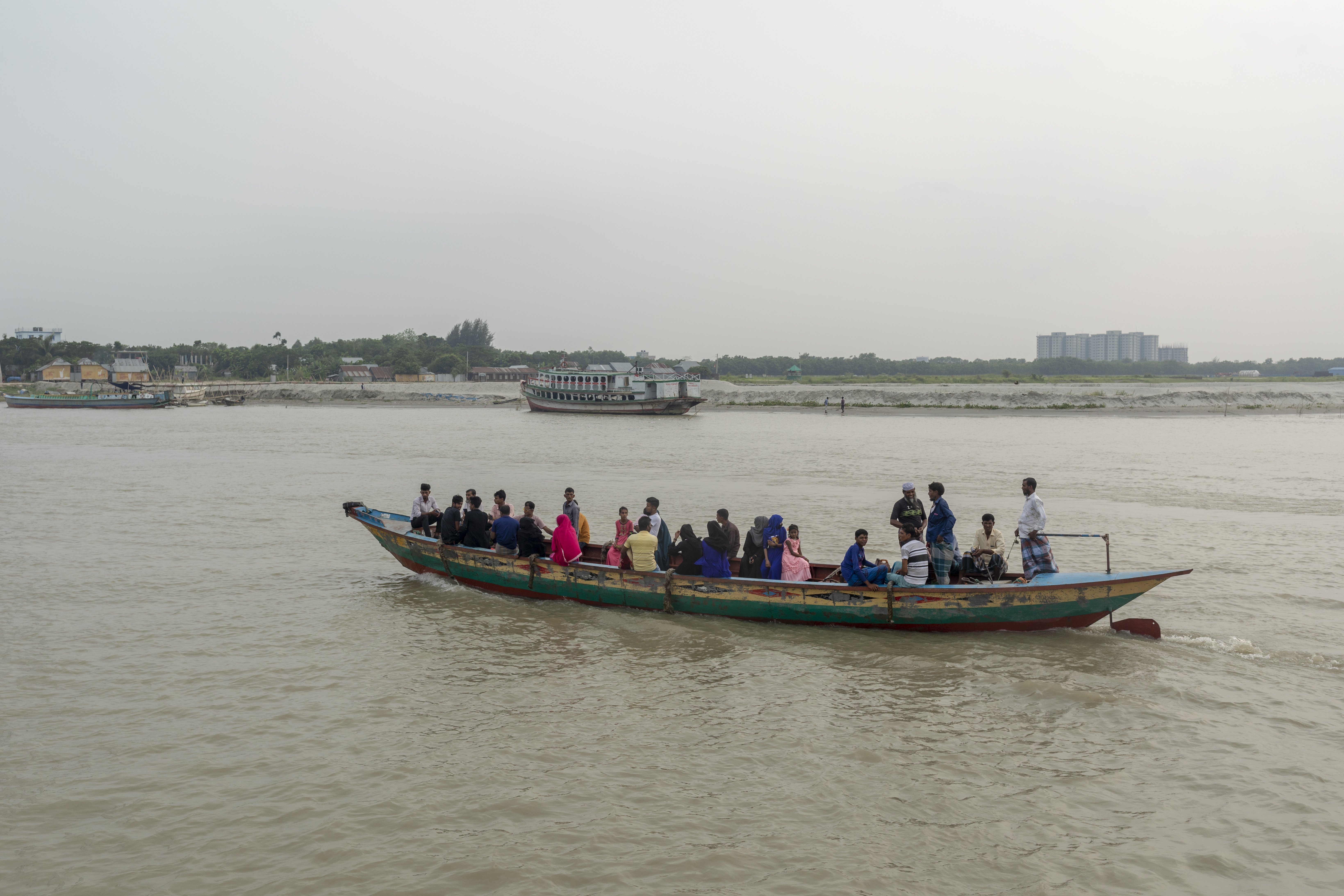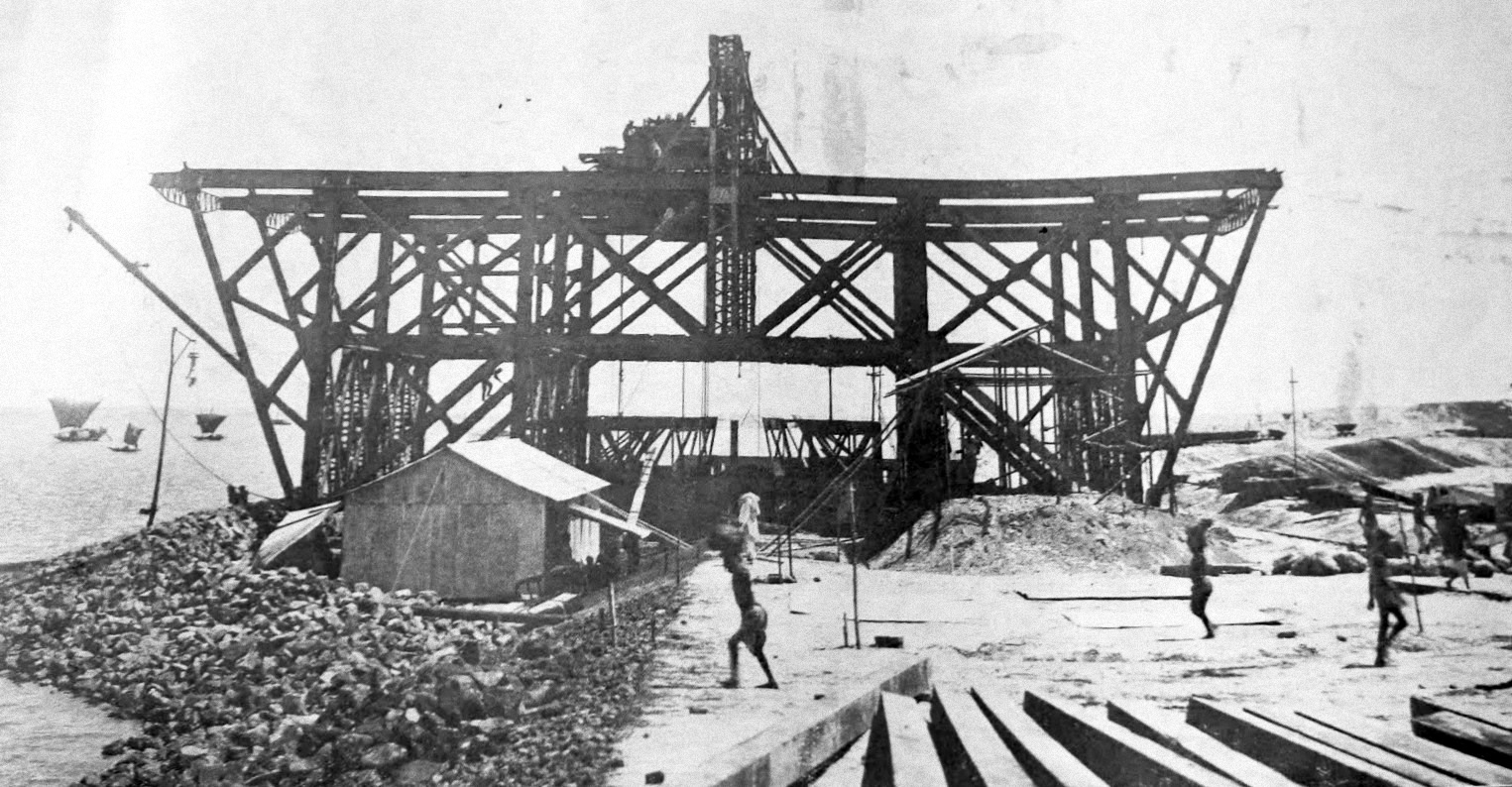|
Abdulpur
Abdulpur ( bn, আব্দুলপুর) is a railway junction in Natore District of Rajshahi Division in Bangladesh. History From 1878, the railway route from Kolkata, then called Calcutta, to Siliguri was in two laps. The first lap was a 185 km journey along the Eastern Bengal State Railway from Calcutta Station (later renamed Sealdah) to Damookdeah Ghat on the southern bank of the Padma River, then across the river in a ferry and the second lap of the journey. A 336 km metre gauge line of the North Bengal Railway linked Saraghat on the northern bank of the Padma to Siliguri. It was during this period that Abdulpur came up as a railway station. The Kolkata-Siliguri main line was converted to broad gauge in stages. The Shakole-Santahar Santahar ( bn, সান্তাহার) is a railway junction in Adamdighi Upazila in Bogra District of Rajshahi Division in Bangladesh. History From 1878, the railway route from Kolkata, then called Calcutta, to Siliguri ... [...More Info...] [...Related Items...] OR: [Wikipedia] [Google] [Baidu] |
Old Malda–Abdulpur Line
Old Malda–Abdulpur line was built in 1930 during the British Indian rule. At present, the Bangladesh part of the railway line is operated and maintained under Bangladesh Railway and the Indian part of the railway line is managed and maintained by Indian Railways. History In 1878, the Howrah–New Jalpaiguri line was divided into two sections. The first leg was a 185 km journey on the East Bengal State Railway from Calcutta railway station (now Sealdah) to Damukdia Ghat on the south bank of the Padma River, followed by a second journey across the river by ferry. The North Bengal Railway's 336 km meter gauge line connected Saraghat on the north bank of the Padma with Siliguri. The Howrah–New Jalpaiguri main line was gradually converted to broad gauge. The Hardinge Bridge was opened in 1915, while the Saraghat–Sirajganj line was built by the Sara–Sirajganj Railway Company between 1915-16. Then in 1930, the Abdulpur–Amnura broad gauge line was opened as a branch of the Saragha ... [...More Info...] [...Related Items...] OR: [Wikipedia] [Google] [Baidu] |
Chilahati–Parbatipur–Santahar–Darshana Line
The Chilahati–Parbatipur–Santahar–Darshana line is a railway line connecting Chilahati and Darshana, via Parbatipur Junction, Santahar, Abdulpur, Azim Nagar station (in Gopālpur, Lalpur Upazila), Iswardi and Hardinge Bridge in Bangladesh. This track is under the jurisdiction of Bangladesh Railway. History From 1878, the railway route from Kolkata, then called Calcutta, to Siliguri was in two laps. The first lap was a journey along the Eastern Bengal State Railway from Calcutta Station (later renamed Sealdah) to Damookdeah Ghat on the southern bank of the Padma River, then across the river in a ferry and the second lap of the journey. A metre gauge line of the North Bengal Railway linked Saraghat on the northern bank of the Padma to Siliguri. The long Hardinge Bridge across the Padma came up in 1912. In 1916 the metre-gauge section north of the bridge was converted to broad gauge, and so the entire Calcutta - Siliguri route became broad-gauge. With the partition o ... [...More Info...] [...Related Items...] OR: [Wikipedia] [Google] [Baidu] |
Bangladesh Railway
Bangladesh Railway ( bn, বাংলাদেশ রেলওয়ে) is the state-owned rail transport agency of Bangladesh. It operates and maintains all railways in the country, and is overseen by the Directorate General of Bangladesh Railway. The Bangladesh Railway is governed by the Ministry of Railways and the Bangladesh Railway Authority. Its reporting mark is "BR". The Bangladesh Railway system has a total length of In 2009, Bangladesh Railway had 34,168 employees. In 2014, Bangladesh Railway carried 65 million passengers and 2.52 million tonnes of freight. The railway made 8,135 million passenger-kilometres and 677 million tonne-kilometres. History Rail transport in Bangladesh (the then British India) began on 15 November 1862, when 53.11 km of (broad gauge) line was opened between Darshana in Chuadanga District and Jogotee in Kushtia District. On 1 January 1871, extension of Darshana - Jogotee Railway line up to Goalanda by Eastern Bengal Railway. On 4 Ja ... [...More Info...] [...Related Items...] OR: [Wikipedia] [Google] [Baidu] |
Bangladesh
Bangladesh (}, ), officially the People's Republic of Bangladesh, is a country in South Asia. It is the eighth-most populous country in the world, with a population exceeding 165 million people in an area of . Bangladesh is among the most densely populated countries in the world, and shares land borders with India to the west, north, and east, and Myanmar to the southeast; to the south it has a coastline along the Bay of Bengal. It is narrowly separated from Bhutan and Nepal by the Siliguri Corridor; and from China by the Indian state of Sikkim in the north. Dhaka, the capital and largest city, is the nation's political, financial and cultural centre. Chittagong, the second-largest city, is the busiest port on the Bay of Bengal. The official language is Bengali, one of the easternmost branches of the Indo-European language family. Bangladesh forms the sovereign part of the historic and ethnolinguistic region of Bengal, which was divided during the Partition of India in ... [...More Info...] [...Related Items...] OR: [Wikipedia] [Google] [Baidu] |
Natore District
Natore district is a district of Rajshahi Division located in northern Bangladesh. It borders the metropolitan city of Rajshahi, and used to be part of Rajshahi district. History Natore was the District Headquarters of Rajshahi from 1769 to 1825. Administrative Natore subdivision was established in 1825 under Rajshahi district, on the eve of the shifting of the headquarters. During the Bangladesh Liberation War in 1971, a battle was fought between the Pakistani army and the freedom fighters of Mukti Bahini on March 29. About 40 members of the Pakistani army including Major Aslam and Captain Ishaq were killed. On 5 May 1971 Pakistani Army killed 42 employees of North Bengal Sugar Mills ( Lalpur) including the general manager of the mill, Lieutenant Anwarul Azim. They were killed near a pond in the mill campus. The pond is now known as Shaheed Sagar, and there is a memorial beside the pond. Geography Most parts of Natore district are plain land. Chalan Beel, the largest beel in ... [...More Info...] [...Related Items...] OR: [Wikipedia] [Google] [Baidu] |
Rajshahi Division
Rajshahi Division ( bn, রাজশাহী বিভাগ) is one of the eight first-level administrative divisions of Bangladesh. It has an area of and a population at the 2011 Census of 18,484,858. Rajshahi Division consists of 8 districts, 70 Upazilas (the next lower administrative tier) and 1,092 Unions (the lowest administrative tier). The region has historically been dominated by various feudal Rajas, Maharajas and Zamindars. Formerly comprising 16 districts, a new division (Rangpur Division) was formed with the 8 northern districts of the old Rajshahi Division from early 2010. Etymology and names The Rajshahi Division is named after Rajshahi District. Dominated by various feudal Rajas, Maharajas and Zamindars of mixed origins throughout history, the name is a compound of the words ''Raj'' and ''Shahi'', both of which can be translated into reign or kingdom. Archaic spellings in the English language also included ''Rajeshae''. The capital city of the division was for ... [...More Info...] [...Related Items...] OR: [Wikipedia] [Google] [Baidu] |
Kolkata
Kolkata (, or , ; also known as Calcutta , the official name until 2001) is the capital of the Indian state of West Bengal, on the eastern bank of the Hooghly River west of the border with Bangladesh. It is the primary business, commercial, and financial hub of Eastern India and the main port of communication for North-East India. According to the 2011 Indian census, Kolkata is the seventh-most populous city in India, with a population of 45 lakh (4.5 million) residents within the city limits, and a population of over 1.41 crore (14.1 million) residents in the Kolkata Metropolitan Area. It is the third-most populous metropolitan area in India. In 2021, the Kolkata metropolitan area crossed 1.5 crore (15 million) registered voters. The Port of Kolkata is India's oldest operating port and its sole major riverine port. Kolkata is regarded as the cultural capital of India. Kolkata is the second largest Bengali-speaking city after Dhaka ... [...More Info...] [...Related Items...] OR: [Wikipedia] [Google] [Baidu] |
Siliguri
Siliguri, ) is a major tier-II city in West Bengal. It forms twin cities, "Twin Cities" with the neighboring district capital of Jalpaiguri. The city spans areas of the Darjeeling district, Darjeeling and Jalpaiguri districts in the Indian states and territories of India, state of West Bengal. Known as the ''"Gateway of Northeast India"'', Siliguri is popular for three Ts - tea, timber and tourism. It is located on the banks of the Mahananda River and the Teesta River at the foothills of the Himalayas. Siliguri is the List of metropolitan area in West Bengal, third largest urban agglomeration in West Bengal, after Kolkata and Asansol. Siliguri has great strategic importance in West Bengal. It is located conveniently, connecting four international borders i.e. China, Nepal, Bangladesh and Bhutan. It also connects the North-East with mainland India. Located at the foothills of Eastern Himalayas, Siliguri is a significant trading and transportation hub. History file:BAYLEY(1838) ... [...More Info...] [...Related Items...] OR: [Wikipedia] [Google] [Baidu] |
Padma River
The Padma ( bn, পদ্মা ''Pôdma'') is a major river in Bangladesh. It is the main distributary of the Ganges, flowing generally southeast for to its confluence with the Meghna River near the Bay of Bengal. The city of Rajshahi is situated on the banks of the river.Hossain ML, Mahmud J, Islam J, Khokon ZH and Islam S (eds.) (2005) Padma, Tatthyakosh Vol. 1 and 2, Dhaka, Bangladesh, p. 182 . Since 1966, over of land has been lost due to erosion of the Padma. History Etymology The Padma, Sanskrit for lotus flower, is a mentioned in Hindu mythology as a byname for the Goddess Lakshmi. The name ''Padma'' is given to the lower part of the course of the Ganges (Ganga) below the point of the off-take of the Bhagirathi River (India), another Ganges River distributary also known as the Hooghly River. Padma had, most probably, flowed through a number of channels at different times. Some authors contend that each distributary of the Ganges in its deltaic part is a remnan ... [...More Info...] [...Related Items...] OR: [Wikipedia] [Google] [Baidu] |
Santahar
Santahar ( bn, সান্তাহার) is a railway junction in Adamdighi Upazila in Bogra District of Rajshahi Division in Bangladesh. History From 1878, the railway route from Kolkata, then called Calcutta, to Siliguri was in two laps. The first lap was a 185 km journey along the Eastern Bengal State Railway from Calcutta Station (later renamed Sealdah) to Damookdeah Ghat on the southern bank of the Padma River, then across the river in a ferry and the second lap of the journey. A metre gauge line of the North Bengal Railway linked Saraghat on the northern bank of the Padma to Siliguri. It was during this period that Santahar came up as a railway station. In 1899-1900 a metre gauge railway line was constructed between Santahar and Fulchhari, on the western bank of the Jamuna by Brahmaputra-Sultanpur Railway Company. The Kolkata-Siliguri main line was converted to broad gauge in stages. The Shakole-Santahar section was converted in 1910–1914, when Hardinge Brid ... [...More Info...] [...Related Items...] OR: [Wikipedia] [Google] [Baidu] |
Hardinge Bridge
Hardinge Bridge is a steel railway truss bridge over the Padma River located at Ishwardi, Pabna and Bheramara, and Kushtia in Bangladesh. It is named after Lord Hardinge, who was the Viceroy of India from 1910 to 1916. The bridge is long. Construction Construction of the through truss bridge began in 1910, though it was proposed at least 20 years earlier. It was constructed by Braithwaite and Kirk Company based on design of Sir Alexander Meadows Rendel. It was completed in 1912, and trains started moving on it in 1915. Brief history The construction of a railway bridge over the Padma was proposed in 1889 by the Eastern Bengal Railway for easier communication between Calcutta and the then Eastern Bengal and Assam. In 1902, Sir FJE Spring prepared a report on the bridge. A technical committee reported that a bridge could be constructed at Sara crossing the lower Ganges between the Paksey and Bheramara Upazila stations on the broad gauge railway from Khulna to Parbatipur Upa ... [...More Info...] [...Related Items...] OR: [Wikipedia] [Google] [Baidu] |





